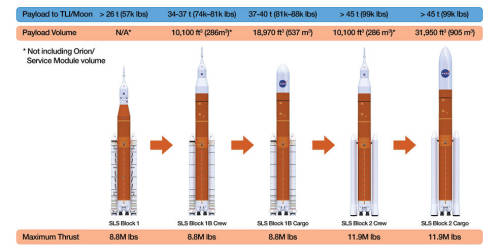(Source)








(Source)
More Posts from Ocrim1967 and Others










(Source)










Ask Ethan: Why Are There Only Three Generations Of Particles?
“It is eminently possible that there are more particles out there than the Standard Model, as we know it, presently predicts. In fact, given all the components of the Universe that aren’t accounted for in the Standard Model, from dark matter to dark energy to inflation to the origin of the matter-antimatter asymmetry, it’s practically unreasonable to conclude that there aren’t additional particles.
But if the additional particles fit into the structure of the Standard Model as an additional generation, there are tremendous constraints. They could not have been created in great abundance during the early Universe. None of them can be less massive than 45.6 GeV/c^2. And they could not imprint an observable signature on the cosmic microwave background or in the abundance of the light elements.
Experimental results are the way we learn about the Universe, but the way those results fit into our most successful theoretical frameworks is how we conclude what else does and doesn’t exist in our Universe. Unless a future accelerator result surprises us tremendously, three generations is all we get: no more, no less, and nobody knows why.”
There are three generations of (fermionic) particles in the Universe. In addition to the lightest quarks (up and down), the electron and positron, and the electron neutrino and anti-neutrino, there are two extra, heavy “copies” of this structure. The charm-and-strange quarks plus the top-and-bottom quarks fill the remaining generations of quarks, while the muon and muon neutrino and anti-neutrino plus the tau and tau neutrino and anti-neutrino comprise the next generation of leptons.
Theoretically, there’s nothing demanding three and only three generations, but experiments have shown that there are no more to within absurd constraints. Here’s the full story of how we know there are only three generations.










This One Thought Experiment Shows Why Special Relativity Isn’t The Full Story
“In Einstein’s initial formulation of General Relativity way back in 1916, he mentioned the gravitational redshift (and blueshift) of light as a necessary consequence of his new theory, and the third classical test, after the precession of Mercury’s perihelion (already known at the time) and the deflection of starlight by a gravitational source (discovered during a total solar eclipse in 1919).
Although a thought experiment is an extremely powerful tool, practical experiments didn’t catch up until 1959, where the Pound-Rebka experiment finally measured a gravitational redshift/blueshift directly. Yet just by invoking the idea that energy must be conserved, and a basic understanding of particle physics and gravitational fields, we can learn that light must change its frequency in a gravitational field.”
If a photon flies through space towards Earth, it must gain energy and become bluer in nature as it approaches Earth’s surface. This idea, of a gravitational redshift or blueshift, dictates how a photon must change in energy in the presence of a gravitational field. Yet this effect, which only exists in General Relativity, could have been predicted as soon as special relativity was discovered by one simple thought experiment: to consider a particle-antiparticle pair dropped from high above the surface of the Earth, but to let the annihilation occur at varying locations.
If you considered that, you’d immediately realize how special relativity was insufficient for describing our Universe! Come learn how to reason it out for yourself today!










5 Things We Still Don’t Know About Black Holes (And 2 We Do) After LIGO
“1.) How small are the lowest-mass black holes?
LIGO has yet to detect any low-amplitude binaries, providing no information about this population.”
Beginning in 2015, the LIGO detectors began to see robust, bona fide signals of gravitational waves. Of the 11 signals detected to date, 10 of them correspond to black hole-black hole mergers. Gravitational wave astronomy has not only opened up a whole new eye on the Universe, it’s opened up a whole new world as far as our understanding of black holes go. With these 10 mergers under our belt, and an upgraded data run expected later this year, it’s time to take stock of what we don’t yet know, and how we hope to get there.
Here’s where we are today in our understanding of LIGO’s black holes.










It’s International Asteroid Day!
(Large Asteroid Impact Simulation)
Asteroid Day (also known as International Asteroid Day) is an annual global event that aims to raise awareness about asteroids and what can be done to protect the Earth, its families, communities, and future generations. Asteroid Day is held on the anniversary of the June 30, 1908 Siberian Tunguska event, the most harmful known asteroid-related event on Earth in recent history.
Learn more here
Animation










7 Fascinating Facts About 2019’s Only Total Solar Eclipse
“3.) Optimally situated viewers will experience 4 minutes and 33 seconds of totality. With Earth near aphelion and the Moon near perigee, it’s nearly twice the duration of 2017’s eclipse.”
On July 2, 2019, the world will experience a total solar eclipse: the only one of the year. Unlike the famous 2017 solar eclipse which spanned the continental United States, this year’s total solar eclipse occurs almost exactly coincident with both lunar perigee, where the Moon is closest to Earth, and solar aphelion, where the Sun is at its farthest point from Earth. July 2nd is just 2 days before our annual aphelion and 3 days before our monthly perigee, meaning that we’ll get 4 minutes and 33 seconds of totality during maximum eclipse: nearly twice as long as 2017′s maximum totality and the longest total solar eclipse we’ll experience until 2027.
What will we learn? What will we see? And how can you observe it from anywhere in the world? Find out these and more amazing facts before the eclipse passes!
We Like Big Rockets and We Cannot Lie: Saturn V vs. SLS
On this day 50 years ago, human beings embarked on a journey to set foot on another world for the very first time.

At 9:32 a.m. EDT, millions watched as Apollo astronauts Neil Armstrong, Buzz Aldrin and Michael Collins lifted off from Launch Pad 39A at the Kennedy Space Center in Cape Canaveral, Florida, flying high on the most powerful rocket ever built: the mighty Saturn V.

As we prepare to return humans to the lunar surface with our Artemis program, we’re planning to make history again with a similarly unprecedented rocket, the Space Launch System (SLS). The SLS will be our first exploration-class vehicle since the Saturn V took American astronauts to the Moon a decade ago. With its superior lift capability, the SLS will expand our reach into the solar system, allowing astronauts aboard our Orion spacecraft to explore multiple, deep-space destinations including near-Earth asteroids, the Moon and ultimately Mars.

So, how does the Saturn V measure up half a century later? Let’s take a look.
Mission Profiles: From Apollo to Artemis
Saturn V

Every human who has ever stepped foot on the Moon made it there on a Saturn V rocket. The Saturn rockets were the driving force behind our Apollo program that was designed to land humans on the Moon and return them safely back to Earth.

Developed at our Marshall Space Flight Center in the 1960s, the Saturn V rocket (V for the Roman numeral “5”) launched for the first time uncrewed during the Apollo 4 mission on November 9, 1967. One year later, it lifted off for its first crewed mission during Apollo 8. On this mission, astronauts orbited the Moon but did not land. Then, on July 16, 1969, the Apollo 11 mission was the first Saturn V flight to land astronauts on the Moon. In total, this powerful rocket completed 13 successful missions, landing humans on the lunar surface six times before lifting off for the last time in 1973.
Space Launch System (SLS)

Just as the Saturn V was the rocket of the Apollo generation, the Space Launch System will be the driving force behind a new era of spaceflight: the Artemis generation.

During our Artemis missions, SLS will take humanity farther than ever before. It is the vehicle that will return our astronauts to the Moon by 2024, transporting the first woman and the next man to a destination never before explored – the lunar South Pole. Over time, the rocket will evolve into increasingly more powerful configurations to provide the foundation for human exploration beyond Earth’s orbit to deep space destinations, including Mars.
SLS will take flight for the first time during Artemis 1 where it will travel 280,000 miles from Earth – farther into deep space than any spacecraft built for humans has ever ventured.
Size: From Big to BIGGER
Saturn V

The Saturn V was big.
In fact, the Vehicle Assembly Building at Kennedy Space Center is one of the largest buildings in the world by volume and was built specifically for assembling the massive rocket. At a height of 363 feet, the Saturn V rocket was about the size of a 36-story building and 60 feet taller than the Statue of Liberty!
Space Launch System (SLS)

Measured at just 41 feet shy of the Saturn V, the initial SLS rocket will stand at a height of 322 feet. Because this rocket will evolve into heavier lift capacities to facilitate crew and cargo missions beyond Earth’s orbit, its size will evolve as well. When the SLS reaches its maximum lift capability, it will stand at a height of 384 feet, making it the tallest rocket in the world.
Power: Turning Up the Heat
Saturn V
For the 1960s, the Saturn V rocket was a beast – to say the least.
Fully fueled for liftoff, the Saturn V weighed 6.2 million pounds and generated 7.6 million pounds of thrust at launch. That is more power than 85 Hoover Dams! This thrust came from five F-1 engines that made up the rocket’s first stage. With this lift capability, the Saturn V had the ability to send 130 tons (about 10 school buses) into low-Earth orbit and about 50 tons (about 4 school buses) to the Moon.
Space Launch System (SLS)

Photo of SLS rocket booster test
Unlike the Saturn V, our SLS rocket will evolve over time into increasingly more powerful versions of itself to accommodate missions to the Moon and then beyond to Mars.

The first SLS vehicle, called Block 1, will weigh 5.75 million pounds and produce 8.8 million pounds of thrust at time of launch. That’s 15 percent more than the Saturn V produced during liftoff! It will also send more than 26 tons beyond the Moon. Powered by a pair of five-segment boosters and four RS-25 engines, the rocket will reach the period of greatest atmospheric force within 90 seconds!

Following Block 1, the SLS will evolve five more times to reach its final stage, Block 2 Cargo. At this stage, the rocket will provide 11.9 million pounds of thrust and will be the workhorse vehicle for sending cargo to the Moon, Mars and other deep space destinations. SLS Block 2 will be designed to lift more than 45 tons to deep space. With its unprecedented power and capabilities, SLS is the only rocket that can send our Orion spacecraft, astronauts and large cargo to the Moon on a single mission.
Build: How the Rockets Stack Up
Saturn V

The Saturn V was designed as a multi-stage system rocket, with three core stages. When one system ran out of fuel, it separated from the spacecraft and the next stage took over. The first stage, which was the most powerful, lifted the rocket off of Earth’s surface to an altitude of 68 kilometers (42 miles). This took only 2 minutes and 47 seconds! The first stage separated, allowing the second stage to fire and carry the rest of the stack almost into orbit. The third stage placed the Apollo spacecraft and service module into Earth orbit and pushed it toward the Moon. After the first two stages separated, they fell into the ocean for recovery. The third stage either stayed in space or crashed into the Moon.
Space Launch System (SLS)
Much like the Saturn V, our Space Launch System is also a multi-stage rocket. Its three stages (the solid rocket boosters, core stage and upper stage) will each take turns thrusting the spacecraft on its trajectory and separating after each individual stage has exhausted its fuel. In later, more powerful versions of the SLS, the third stage will carry both the Orion crew module and a deep space habitat module.
A New Era of Space Exploration
Just as the Saturn V and Apollo era signified a new age of exploration and technological advancements, the Space Launch System and Artemis missions will bring the United States into a new age of space travel and scientific discovery.
Join us in celebrating the 50th anniversary of the Apollo 11 Moon landing and hear about our future plans to go forward to the Moon and on to Mars by tuning in to a special two-hour live NASA Television broadcast at 1 p.m. ET on Friday, July 19. Watch the program at www.nasa.gov/live.
Make sure to follow us on Tumblr for your regular dose of space: http://nasa.tumblr.com.
10 Things: CubeSats — Going Farther
Now that the MarCOs — a pair of briefcase-sized interplanetary CubeSats — seem to have reached their limit far beyond Mars, we’re looking forward to an expanding era of small, versatile and powerful space-based science machines.
Here are ten ways we’re pushing the limits of miniaturized technology to see just how far it can take us.

1. MarCO: The Farthest (So Far)
MarCO, short for Mars Cube One, was the first interplanetary mission to use a class of mini-spacecraft called CubeSats.
The MarCOs — nicknamed EVE and WALL-E, after characters from a Pixar film — served as communications relays during InSight’s November 2018 Mars landing, beaming back data at each stage of its descent to the Martian surface in near-real time, along with InSight’s first image.
WALL-E sent back stunning images of Mars as well, while EVE performed some simple radio science.
All of this was achieved with experimental technology that cost a fraction of what most space missions do: $18.5 million provided by NASA’s Jet Propulsion Laboratory in Pasadena, California, which built the CubeSats.
WALL-E was last heard from on Dec. 29; EVE, on Jan. 4. Based on trajectory calculations, WALL-E is currently more than 1 million miles (1.6 million kilometers) past Mars; EVE is farther, almost 2 million miles (3.2 million kilometers) past Mars.

MarCO-B took these images as it approached Mars in November 2018. Credit: NASA/JPL-Caltech
2. What Are CubeSats?
CubeSats were pioneered by California Polytechnic State University in 1999 and quickly became popular tools for students seeking to learn all aspects of spacecraft design and development.
Today, they are opening up space research to public and private entities like never before. With off-the-shelf parts and a compact size that allows them to hitch a ride with other missions — they can, for example, be ejected from the International Space Station, up to six at a time — CubeSats have slashed the cost of satellite development, opening up doors to test new instruments as well as to create constellations of satellites working together.
CubeSats can be flown in swarms, capturing simultaneous, multipoint measurements with identical instruments across a large area. Sampling entire physical systems in this way would drive forward our ability to understand the space environment around us, in the same way multiple weather sensors help us understand global weather systems.
Ready to get started? Check out NASA’s CubeSats 101 Guide.

Engineer Joel Steinkraus uses sunlight to test the solar arrays on one of the Mars Cube One (MarCO) spacecraft at NASA’s Jet Propulsion Laboratory. Credit: NASA/JPL-Caltech
3. Measuring Up
The size and cost of spacecraft vary depending on the application; some are the size of a pint of ice cream while others, like the Hubble Space Telescope, are as big as a school bus.
Small spacecraft (SmallSats) generally have a mass less than 400 pounds (180 kilograms) and are about the size of a large kitchen fridge.
CubeSats are a class of nanosatellites that use a standard size and form factor. The standard CubeSat size uses a “one unit” or “1U” measuring 10x10x10 centimeters (or about 4x4x4 inches) and is extendable to larger sizes: 1.5, 2, 3, 6, and even 12U.

The Sojourner rover (seen here on Mars in 1997) is an example of small technology that pioneered bigger things. Generations of larger rovers are being built on its success.
4. A Legacy of Small Pathfinders
Not unlike a CubeSat, NASA’s first spacecraft — Explorer 1 — was a small, rudimentary machine. It launched in 1958 and made the first discovery in outer space, the Van Allen radiation belts that surround Earth. It was the birth of the U.S. space program.
In 1997, a mini-rover named Sojourner rolled onto Mars, a trial run for more advanced rovers such as NASA’s Spirit, Opportunity and Curiosity.
Innovation often begins with pathfinder technology, said Jakob Van Zyl, director of the Solar System Exploration Directorate at NASA’s Jet Propulsion Laboratory. Once engineers prove something can be done, science missions follow.

5. Testing in Space
NASA is continually developing new technologies — technologies that are smaller than ever before, components that could improve our measurements, on-board data processing systems that streamline data retrievals, or new methods for gathering observations. Each new technology is thoroughly tested in a lab, sometimes on aircraft, or even at remote sites across the world. But the space environment is different than Earth. To know how something is going to operate in space, testing in space is the best option.
Sending something unproven to orbit has traditionally been a risky endeavor, but CubeSats have helped to change that. The diminutive satellites typically take less than two years to build. CubeSats are often a secondary payload on many rocket launches, greatly reducing cost. These hitchhikers can be deployed from a rocket or sent to the International Space Station and deployed from orbit.
Because of their quick development time and easy access to space, CubeSats have become the perfect platform for demonstrating how a new technological advancement will perform in orbit.

RainCube is a mini weather satellite, no bigger than a shoebox, that will measure storms. It’s part of several new NASA experiments to track storms from space with many small satellites, instead of individual, large ones. Credit: UCAR
6. At Work in Earth Orbit
A few recent examples from our home world:
RainCube, a satellite no bigger than a suitcase, is a prototype for a possible fleet of similar CubeSats that could one day help monitor severe storms, lead to improving the accuracy of weather forecasts and track climate change over time.
IceCube tested instruments for their ability to make space-based measurements of the small, frozen crystals that make up ice clouds. Like other clouds, ice clouds affect Earth’s energy budget by either reflecting or absorbing the Sun’s energy and by affecting the emission of heat from Earth into space. Thus, ice clouds are key variables in weather and climate models.

Rocket Lab’s Electron rocket lifts off from Launch Complex 1 for the NASA ELaNa19 mission. Credit: Trevor Mahlmann/Rocket Lab
7. First Dedicated CubeSat Launch
A series of new CubeSats is now in space, conducting a variety of scientific investigations and technology demonstrations following a Dec. 17, 2018 launch from New Zealand — the first time CubeSats have launched for NASA on a rocket designed specifically for small payloads.
This mission included 10 Educational Launch of Nanosatellites (ELaNa)-19 payloads, selected by NASA’s CubeSat Launch Initiative:
CubeSat Compact Radiation Belt Explorer (CeREs) — High energy particle measurement in Earth’s radiation belt
Simulation-to-Flight 1 (STF-1) — Software condensing to support CubeSat implementations
Advanced Electrical Bus (ALBus) — Advances in solar arrays and high capacity batteries
CubeSat Handling Of Multisystem Precision Time Transfer (CHOMPTT) — Navigation plans for exo-planetary implementation
CubeSail — Deployment and control of a solar sail blade
NMTSat — Magnetic field, high altitude plasma density
Rsat — Manipulation of robotic arms
Ionospheric Scintillation Explorer (ISX) — Plasma fluctuations in the upper atmosphere
Shields-1 — Radiation shielding
DaVinci — High School to Grade School STEM education
8. The Little CubeSat That Could
CubeSat technology is still in its infancy, with mission success rates hovering near 50 percent. So, a team of scientists and engineers set out on a quest. Their goal? To build a more resilient CubeSat — one that could handle the inevitable mishaps that bedevil any spacecraft, without going kaput.
They wanted a little CubeSat that could.
They got to work in 2014 and, after three years of development, Dellingr was ready to take flight.
Read the Full Story: Dellingr: The Little CubeSat That Could

Artist’s concept of Lunar Flashlight. Credit: NASA
9. Going Farther
There are a handful of proposed NASA missions could take CubeSat technology farther:
CUVE would travel to Venus to investigate a longstanding mystery about the planet’s atmosphere using ultraviolet-sensitive instruments and a novel, carbon-nanotube light-gathering mirror.
Lunar Flashlight would use a laser to search for water ice in permanently shadowed craters on the south pole of Earth’s Moon.
Near-Earth Asteroid Scout, a SmallSat, would use a solar sail to propel it to do science on asteroids that pass close to Earth.
All three spacecraft would hitch rides to space with other missions, a key advantage of these compact science machines.

Expedition 56 Flight Engineer Serena Auñón-Chancellor installs the NanoRacks Cubesat Deployer-14 (NRCSD-14) on the Multipurpose Experiment Platform inside the Japanese Kibo laboratory module. The NRCSD-14 was then placed in the Kibo airlock and moved outside of the space station to deploy a variety of CubeSats into Earth orbit. Credit: NASA
10. And We’re Just Getting Started
Even if they’re never revived, the team considers MarCO a spectacular success.
A number of the critical spare parts for each MarCO will be used in other CubeSat missions. That includes their experimental radios, antennas and propulsion systems. Several of these systems were provided by commercial vendors, making it easier for other CubeSats to use them as well.
More small spacecraft are on the way. NASA is set to launch a variety of new CubeSats in coming years.
“There’s big potential in these small packages,” said John Baker, the MarCO program manager at JPL. “CubeSats — part of a larger group of spacecraft called SmallSats — are a new platform for space exploration affordable to more than just government agencies.”
Make sure to follow us on Tumblr for your regular dose of space: http://nasa.tumblr.com





Read Full Article Here: 5 Effects of Physical Discipline - Psych2Go
Follow @psych2go for more!
Google Classroom FINALLY lets you add a “Materials” section under “Classwork”
Literally two days ago they added the ability to add a new kind of post under a Classwork topic. “Materials” (instead of Assignment or Question)
This is your workaround for losing the “About” page. Set up a topic called “About” or “Resources”, then add a “Materials” post under that topic. Boom, done!

ALSO, if you created a Google Classroom before the update, and only have the Stream and People pages, you can now manually add a Classwork page by clicking the grey question mark in the bottom left corner, then selecting “Add Classwork page”.

Try it out, today!
Your Friendly Neighborhood Google for Education Certified Trainer,
-WCT
-
 arv0itus reblogged this · 1 month ago
arv0itus reblogged this · 1 month ago -
 arv0itus liked this · 1 month ago
arv0itus liked this · 1 month ago -
 violetnivea reblogged this · 1 month ago
violetnivea reblogged this · 1 month ago -
 gillybear17 liked this · 2 months ago
gillybear17 liked this · 2 months ago -
 asflowerpot1 reblogged this · 6 months ago
asflowerpot1 reblogged this · 6 months ago -
 professionalpromqueen liked this · 6 months ago
professionalpromqueen liked this · 6 months ago -
 profoundcollectorfestsworld liked this · 1 year ago
profoundcollectorfestsworld liked this · 1 year ago -
 hislittleraincloud liked this · 1 year ago
hislittleraincloud liked this · 1 year ago -
 mollymolzzz reblogged this · 1 year ago
mollymolzzz reblogged this · 1 year ago -
 secomissworld reblogged this · 1 year ago
secomissworld reblogged this · 1 year ago -
 secomissworld liked this · 1 year ago
secomissworld liked this · 1 year ago -
 listrebezinstu liked this · 1 year ago
listrebezinstu liked this · 1 year ago -
 scisdidelofebv liked this · 1 year ago
scisdidelofebv liked this · 1 year ago -
 uscatoptumbprop liked this · 1 year ago
uscatoptumbprop liked this · 1 year ago -
 hitchpelooliga liked this · 1 year ago
hitchpelooliga liked this · 1 year ago -
 xpurplelilyx reblogged this · 1 year ago
xpurplelilyx reblogged this · 1 year ago